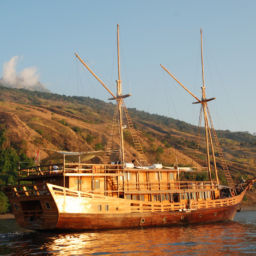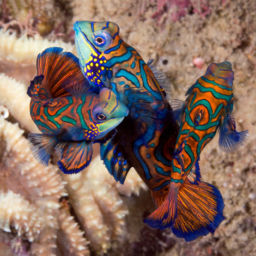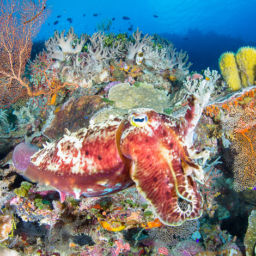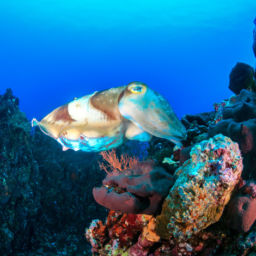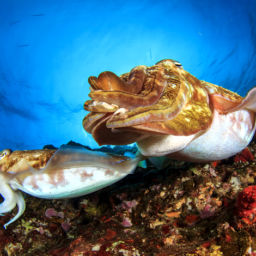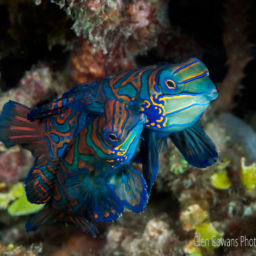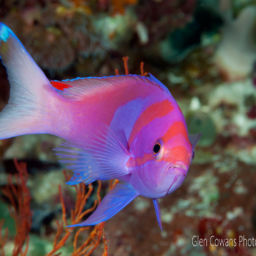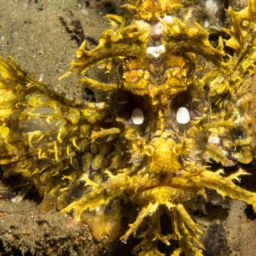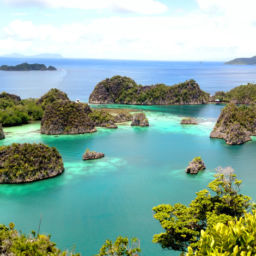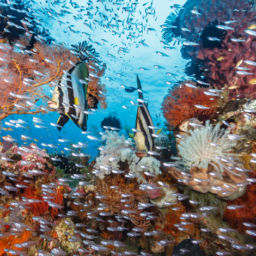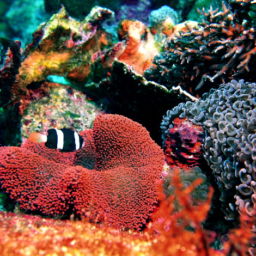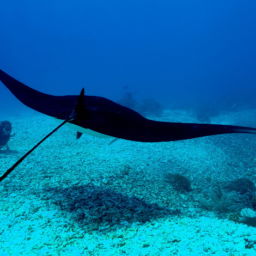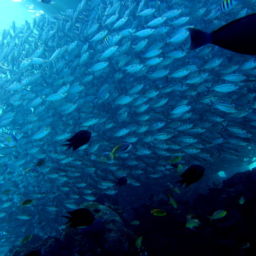The Indonesian island of Lombok is a something of a hidden gem for divers, surfers, and travelers alike. While neighboring Bali is firmly established on the tourist and diving circuit, the best scuba diving in Lombok still flies a bit under the radar. There is a wild side to Lombok diving, most famously around “The Magnet,” but the island also offers also plenty of unspoiled coral and macro life.
Speak of Lombok diving and many divers will mention the Gili Islands — Trawangan, Air and Meno. Favorites among backpackers and honeymooners, the Gilis offer easy diving conditions, white-sand beaches and lots of turtles. Dive centers in the Senggigi area, in the northwest of mainland Lombok, also favor these dive sites.
However, there is much more to Lombok diving — and much more remains yet to be discovered. Aside from the north Gilis, the most developed diving area on the island is the southwest. Less than a handful of dive centers currently operate in this remote part of Indonesia, so there is a good chance you will have dive sites to yourself. Fringing reefs are home to numerous species of soft coral, creating ideal hiding spots for macro life. Currents here are gentle, if there are any at all, so it’s a great place to learn to dive or get back into it after a bit of time on land. And Belongas Bay on the southern coast is home to some of Indonesia’s top adrenaline diving. There are plenty of dive sites to choose from for adventurous and less-adventurous divers alike. Here are our picks for the best scuba diving in Lombok.
Sekotong and South Gilis
Where is it: The Sekotong area inhabits a peninsula jutting off the southwest coast of Lombok. Facing the peninsula are a few tiny islands, including Gili Asahan, Gede, Ringgit and many more. All are home to sandy white beaches and are surrounded by beautiful, unspoiled fringing reefs.
What makes it special: With few divers in the area, there is a great chance that you’ll have the dive sites to yourself. Divers can see healthy soft coral in abundance, plus lots of nudibranchs, shrimps and crabs. This is also a great spot to learn to dive in small groups.
Details: There are two operators based in the area: DiveZone/Two Fish Lombok and Cocotinos. Both centers will arrange transfers from other resorts and from the smaller Gili islands to their bases. The water temperature ranges from 79 to 86 F (26 to 30 C), so most divers will be fine in a 3mm wetsuit.
The Stairs of Medang is our favorite site in this area. As the name suggests, this terraced reef drops in the shape of a stairway to a depth of just over 100 feet (30 m). Turtles and plenty of reef fish circle on the top of the reef, with sharks and even manta rays passing by deeper.
Small Gili Ringgit features several worthwhile spots, great for both macro photographers and novice divers. Macro fans will enjoy the ghost pipefish, varieties of shrimp species and crabs hiding in feather stars and soft coral, while less experienced divers will enjoy blue-spotted stingrays and cuttlefish. The west side of Gili Ringgit is home to hard-coral gardens.
Located on the outer edge of mainland Lombok, Lighthouse is a beautiful drift dive that starts with a slowly descending plateau and continues into a deep valley, home to reef sharks and schooling mackerel surrounded by large coral formations. In the shallower parts of this site, divers can see emperor angelfish, sweetlips and large groupers.
Belongas Bay
Where is it: Belongas Bay is right on the southern coast of south Lombok. The sea here is open with no land for thousands of miles, making for challenging diving conditions.
What makes it special: Schooling hammerheads, plus a great chance to see reef sharks, mobula rays and some of the largest banded sea snakes we have ever seen.
Details: DiveZone/Two Fish Lombok is currently the only operator running trips to this area from June to October. Trips are open to experienced divers only with a minimum qualification of Advanced Open Water and 100 logged dives. Divers must also be ready for negative entries, swells and dealing with up– and downcurrents. Divers can stay in the only local resort, Belongas Bay Lodge, or visit on day trips from the Sekotong area. Diving here is not for the fainthearted. Water temperatures rarely rise above 80 F (27 C), so you’ll want a full 3 mm (or even 5 mm) wetsuit. This will also help avoid the cuts and scratches that can happen in the area’s larger swells.
The Magnet is famous for a reason — schooling scalloped hammerheads. This pinnacle with a lighthouse is usually surrounded by impressive waves. Underwater, the topography shelters schooling barracudas as well as other shark species. There are a few overhangs worth checking out as well.
Named after the shape of the pinnacle, the Cathedral is home to large, friendly banded sea snakes. Divers can also spot Napoleon wrasse and plenty of schooling reef fish.
Sitting directly in the opening of Belongas Bay to the open sea, Gili Sarang is the place to see mobula rays. They often travel in groups of two to three and will stay with divers, offering great photo and video opportunities. In August and September, mobula schools are usually bigger, with dozens of rays surrounding divers. This is also a good spot to see reef sharks and drift over large expanses of soft coral.
Getting there
Given its relatively remote location, you’ll have to put in a bit of effort to reach Lombok. Logistics are pretty straightforward, however: just don’t expect super-fast Wi-Fi once you arrive. Fast boats from the south or east coast of Bali are a good option to reach the north of the island. From there, a two- to three-hour car journey takes divers to Sekotong. Anyone looking to travel more directly should consider flights to Lombok airport, outside of the island’s capital of Mataram. From here it’s a shorter car journey to the Sekotong area.






